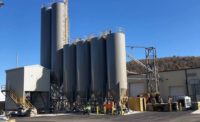It has been nearly three years since the New Jersey Legislature established the licensed site remediation professional (LSRP) program, which takes full effect this month. Under the New Jersey Dept. of Environmental Protection (NJDEP), the program requires environmental consultants to obtain LSRP licensure to oversee remediation sites and certify that work is completed in accordance with applicable state requirements.
The move means that remediating parties are now required to retain an LSRP to replace the assigned NJDEP case manager on almost all state remediation cases. The primary benefit of this is that LSRPs are given the ability to move sites quickly along the regulatory process, bypassing lengthy wait times for agency review and comment on submittals.
The program is the state's attempt to improve the unacceptable record of remediation cases in the NJDEP backlog. NJDEP has estimated the backlog to be as high as 20,000 cases, ranging from heating oil tanks to Superfund sites.
While the program aims to encourage economic growth and sooth pro-environment concerns, a strong outcry from all stakeholders has followed the program since its adoption. Environmental organizations fear that LSRPs will not enforce regulations, while business owners fear that LSRPs will be overly conservative in applying regulations. Tensions between the stakeholders and LSRPs will likely increase in the months ahead as the new program takes hold.
However, despite NJDEP's extensive outreach, including guidance documents and other resources on its site remediation program website, thousands of business owners may still be unaware of the requirement to retain an LSRP. This makes it all the more important for all parties to be patient and open to learning as the new program evolves.
Under the program, one of the most elusive yet fundamental concepts for stakeholders to grasp is the need for a new regulatory framework to support LSRP "professional judgment" in performing work. In the past, consultants in New Jersey were limited in exercising such judgment by a very prescriptive set of regulations. In the prescriptive model, consultants relied on the NJDEP case manager to use his or her discretion in interpreting regulations based on case-specific considerations.
The new program supports a transformation from that prescriptive framework to one that supports the LSRP's professional judgment. Under the program, professionals must be trained to understand how to apply NJDEP guidance documents and to present the technical and scientific basis for their decisions. This is a substantial change from the former framework.
Also, the LSRP code of ethics establishes that "a licensed site remediation professional's highest priority in the performance of professional services shall be the protection of public health and safety and the environment." As the LSRP model takes over the remediation program, it will be critically important for these professionals to establish a track record aligned with this priority.
That requires an understanding of all aspects of new regulations, including the new performance-based technical regulations. For example, proposed revisions to NJDEP's technical requirements for remediation have eliminated much of the prescriptive detailed procedures regarding how to conduct site remediation. Instead, they emphasize goals and objectives, and detailed procedures are available in technical guidance documents. Stakeholder groups were formed to develop the new guidance documents to ensure that state-of-the-art concepts were considered and to acknowledge the LSRPs' ability to exercise professional judgment.
The success of the program will depend on the ability of LSRPs to understand how to apply and respect professional judgment within the program's framework. This is necessary to ensure protection of human health and the environment without being unreasonably conservative.



Post a comment to this article
Report Abusive Comment